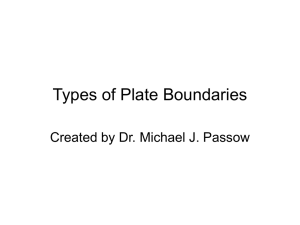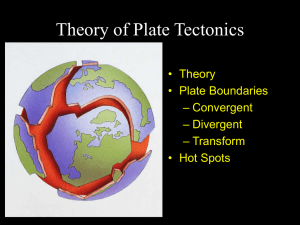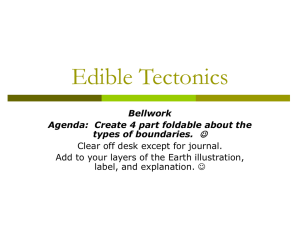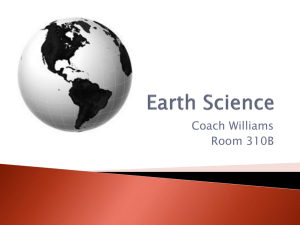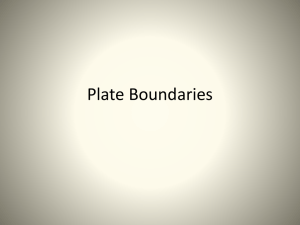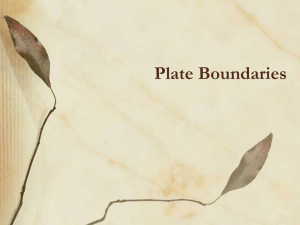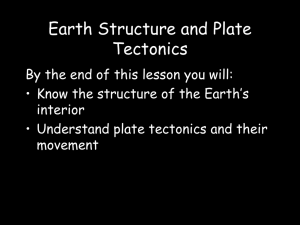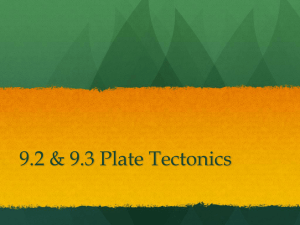The Modern Theory of Plate Tectonics
advertisement
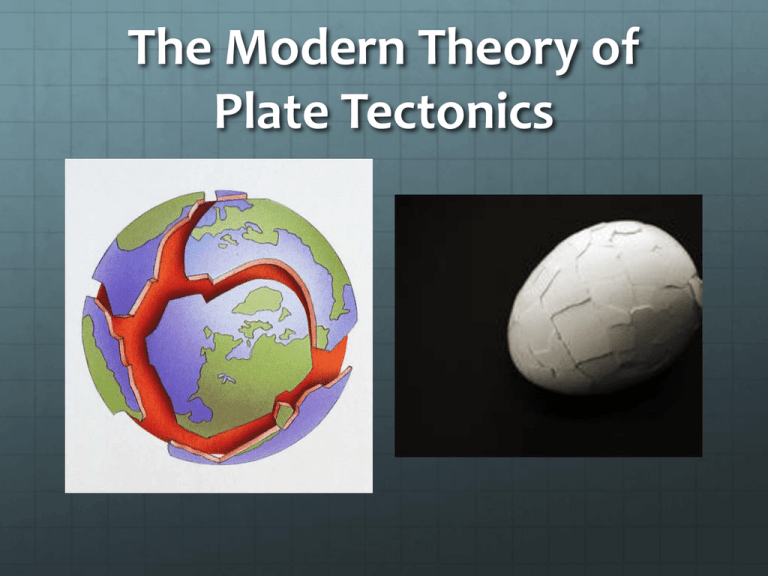
The Modern Theory of Plate Tectonics Remember that it took Alfred Wegener’s Theory of Continental Drift (1915) and Harry Hess’s Theory of Seafloor Spreading (1960) to finally add up to the Theory of Plate Tectonics. And as Plate Tectonics swept through the scientific world, scientists from all branches of science found that it explained so many things so well. Mountains Volcanoes Earthquakes The Ring of Fire Fossils Other deposits Mid-ocean ridges Deep Sea Trenches The main points: That the Earths’outermost layer (the lithosphere) is broken into pieces, called plates. (seven major ones, several small ones) For some reason(s), these plates are moving. There are two types of crust “riding” on the plates – continental crust and oceanic crust. New crust can form (at spreading plate boundaries) and older crust can be destroyed at subduction zones, where plates are coming together. The two types of crust. Continental Crust Makes up most of the continents (actually a little bigger than the continents. Oceanic Crust Makes up most of the seafloor Much younger The oldest crust Made of mostly basalt (an igneous rock) Made of all three rock types (igneous, sedimentary, metamorphic) Much thinner Granite is the most common rock in the continental crust More dense, so it “rides” lower. Much thicker Less dense The lithosphere moves over a gooey layer of the upper mantle known as the asthenosphere. Notice the thickness of the two types of crusts. But the most interesting activity is at the boundaries of the plates, where they meet each other! There are THREE types of plate boundaries: Convergent plate boundaries Divergent plate boundaries Transform plate boundaries Divergent Plate Boundaries Wherever plates are separating. Mostly at mid-ocean ridges. Formation of new crust at these boundaries. Divergent plate boundaries explain how “new” oceans formed as Pangaea split up. One place where we can study a divergent plate boundary on land is the African Rift Valley. Someday, it might separate enough, so that a new ocean will form, and Africa will be broken into two pieces! This is how the Atlantic Ocean once formed too. Another place where we can study divergence on land is Iceland, where the mid-Atlantic Ridge is above sea level. Iceland is a fascinating place, with a great deal of geothermal, volcanic, and seismic activity. Convergent Plate Boundaries Perhaps the most interesting boundary! Where plates are colliding into each other (converging). What happens depends on the two types of crust colliding. This is where you might find subduction zones, volcanoes, or deep sea trenches. Oceanic-oceanic convergent plate boundaries explains the many chains of volcanic islands in the world’s oceans. Oceanic-continental convergent boundaries explains chains of volcanoes along the edges of continents, such as along the west coast of North America And continental-continental convergent plate boundaries explains the formation of the mighty Himalaya Mountains. Transform Plate Boundaries Where two plates are sliding next to each other. Usually come with a good deal of seismic activity! The best example of a transform boundary is the San Andreas Fault Zone in California. But what is still difficult to explain is what force drives the plates to move? One theory is that it is the heat within the mantle. Obviously there is a lot of heat under the crust! Molten rock is called magma. Hot liquids (even gooey magma) can form convection currents. Convection currents might be what causes the plates to move. Convection currents will also form in a pot of boiling water, or even in the air. Could convection be what drives the plates to move? Plate tectonics certainly explains why earthquakes and volcanoes happen where they do. And as the plates continue to slowly move, what will the Earth look like in the future? Stick around long enough and we will all find out! (Click on image for video of plate tectonics – 1:20.) This is a short video (10:24) – click on image showing how Plate Tectonics might have begun and how it continues to influence our planet and our lives.
